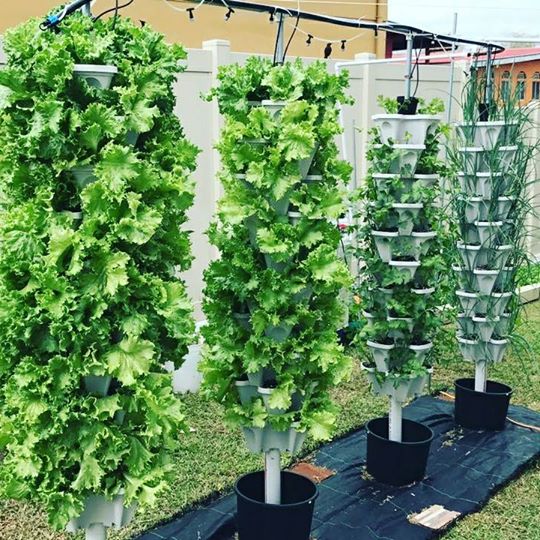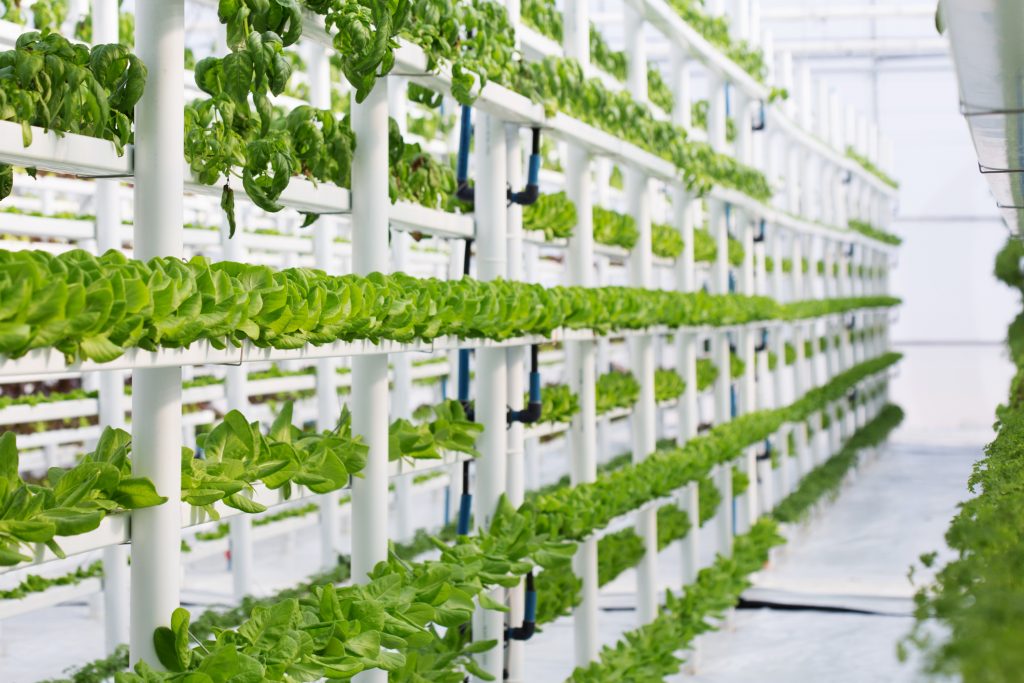In a world with speedily advancing technologies, the gardening field too has made quite a few revolutionary advancements. With the hazards of pollution and climate change, cropping methods have been constantly changing to accommodate the lessening of resources required for cultivation.
On review, on can understand that there are many methods of house gardening that can be mastered with enough knowledge and practiced skill. Keeping up with the latest gardening trends will help you revolutionize your simple house garden into something that is more simple complex.
This article will explicate upon an efficient advancement in farming known as Hydroponics, specifically, vertical Hydroponics. But in order to delve into the process, first we need to acquaint ourselves on what exactly this system is and how does it work?
What is Vertical Hydroponics?

We know what Hydroponics is. But just to reiterate: Hydroponics is a way of growing plants without using soil where in minerals and other such nutrients are given to the plants through the medium of only water. Such a system is efficient in more ways than one and an easily be pursued even at home. Vertical Hydroponics is simply the setting up of a Hydroponic farm except in a vertical fashion. It is a proven fact that this system aids efficient water use upto 90 percent. Gravity plays a major role in such a system where, the water begins flow at the top of the system and flows down to the bottom, where it settles.
How Does It Work?
Vertical hydroponics uses a tower of sorts to vertically farm. In this hydroponic tower a tube is connected to a small water reservoir at the bottom where a hydroponic pump will assist in pumping the water to the top. There, gravity comes into play and it is used to bring water down in a controlled manner back to the reservoir, in the process of which it delivers the nutrients to the plant. The tube can only be one in the system or there can be installed numerous channels through which the nutrients and water reaches the plants. The plants are placed in net cups angled at 45 degrees for easy allowance of the water to flow through the roots.
Another kind of vertical hydroponic system would be that of a zig – zag vertical hydroponic system. This type of vertical system has pipes arranged in a zig – zag manner where the net cups holding the plants are placed in the pipe holes at a standing 90 degree angle. In the same way, the water is first pumped to the top of the system and from there it begins its down flow. In the case of an indoor system, light may be a concern. This is why multiple light panels are arranged on top of each of the pipe to provide light equally and equidistantly.
Why Should I Use It?
But I’m sure you’d like to know why this system works as efficiently as it does and what are its gains over other methods of cultivation. Well, you see, a vertical Hydroponic system has all the gains of a normal Hydroponic system, but in a vertical way. Such gains include:
- Year round plant production
- Planting can be done both outdoors and indoors
- Nutrients supplied to plants can be controlled
- Water conservation
- Higher yield per area
- Enhanced flavor of the crop
- Increased crop yield
- Diseases and pests that are soil borne can be avoided
- No necessity for weeding
- Lesser chances of re – potting plants since they aren’t bound by roots
- Can be set – up in sunny areas like the patio, the rooftop or balconies.
- Makes upto 90 percent efficient use of water
With such benefits, it’s worth considering setting up such a system in comparison to the traditional system of soil bound cultivation.
A few simple DIY Vertical Hydroponic set – ups.
Stacked Hydroponic Set – up
A vertical hydroponic set – up where the plants have been stacked one upon the other is one of the most basic set – ups that you can easily assemble by yourself for your garden. You can purchase the kit in any gardening store with easy instructions as to how to go about it. This set – up is customized specifically for a backyard garden or a house set – up. For a beginner, this set – up is worth trying out to see how you can handle it. And because it is easy to assemble and manage, you wouldn’t face many problems.
However, there are a few things that you would need to pay attention to. The water flow in the stack has to be regulated so that the plants are provided with the water adequately. You also have to see to it that the lower plants do not drown. The supplement of light has to also be carefully supervised. Hydroponics thrives on light and that is why it is important that they get adequate light. Adding to that, you also have to take care of the nutrient mix that you will provide the plant with. If all these things are properly taken care of, then you will have a successfully running backyard vertical hydroponic system that you won’t regret investing in.
A – Frame Hydroponic System
A Framed Vertical Hydroponic System can also be easily assembled by carefully following the right instructions. This set – up allows for the growth of a large number of plants in a limited space because of which production is a lot higher. Because there are many layers of pipes, the tubes required will also be more. And because the water flow is not just in one direction, the pumping system will be a little more complex than normal. But it’s not anything you can’t do.
Zig – Zag Hydroponic System
A zig – zag hydroponic system is also a kind of vertical system that is very space efficient and helps in higher production. With instruction and a few PVC pipes you can easily build it by yourself for your garden. The pumping in such a system may be a little complicated, but once you figure it out, you will easily be able to further operate it. Such a system can come in handy for the growing of many plants efficiently.
Rain Tower Hydroponic Set – Up
A rain tower set – up is your usual tall tube hydroponic set – up that is the most efficient. It also makes sure that the water is very efficiently used. Other than water flow, this set – up provides no problem that. Water flow too can easily be tackled. And the best part is, it can easily be set up by you too!
Vertical Gutter Garden
Gardening is a fun place to get creative. You can build a vertical hydroponic system by also using the gutters. And rain water will be a huge help in this. It’s simple to build and can be assembled by anyone talented enough to follow instruction. It can also easily be controlled and will also beautify your garden if placed in the right spot!
What are its advantages?
- No necessity of soil: The presence of soil would invite the chances of numerous diseases and pests that will attack the plants. A Hydroponics system in general does not use soil at all, and in a vertical Hydroponic system, the absence of soil makes the tower lighter and facilitates easy flow of water. This also helps in the absence of weeds which eliminates the need to weed regularly.
- Optimal use of space and optimal results: In a vertical Hydroponic system especially, numerous plants can be fitted than in a conventional soil setting. This allows for more plants in a less space. With selective nutrients and adequate lighting, there will be high growth that will be even more luscious.
- Compact design: The design of a vertical hydroponic system in particular allows for smaller space occupancy and a larger production potential. The way in which the tower is designed itself helps in occupying less space and is built in a very compact form.
- Automatic maintenance & reduced wastage: The way in which the system is constructed, the water and nutrients inside the tube stay inside itself without any spilling. Moreover, they reuse themselves until they reach the point of no use. This ensures optimal usage and minimal wastage.
Now, what are its disadvantages?
- Need for numerous resources: The production in a vertical hydroponic system is high, yes, but so will be the resources that you utilize for this cultivation. The light panels, the water system, monitoring the water reservoir and such will result in increase of cost invested and also time.
- Difficulties in water flow: In a vertical hydroponic system, because the plants are placed one above the other, the water needs to be delivered in a vertical form. In order to send the water to the top against the force of gravity you would require pumps with higher power. And if the water in not constantly sent up, then it would only collect at the bottom and too much of it will pose a danger of drowning the below plants.
- Supplying light: Light, in a hydroponic system is very essential. When setting up this system outside, the issue of light is not much as it can easily be tackled by strategically arranging the net cups. Whereas, indoors system is more tricky. All the levels of plants would require equal amounts of light at an equal distance and this can only be solved by placing separate light panels that cater to the plants equally.
Conclusion
No system can be without weaknesses, and neither is the vertical hydroponics system. However, you must keep in mind that its disadvantages can be easily tackled with a little effort and money. Moreover, its advantages outweigh the disadvantages by a larger proportion. On reviewing, you can see that it is not completely a lesser system to invest in. If used rightly, it can produce an unusually high yield at the cost of a one – time investment, with the exception of certain cost indulgences that may later come up.
Hydroponics is a vast and exciting realm. You can get as creative as you want and it can all be easily executed. For all you beginners, this system can also be tried out at its most basic level. A vertical hydroponic system is easy to assemble and easy to handle. So why not look through everything and give it a try?

